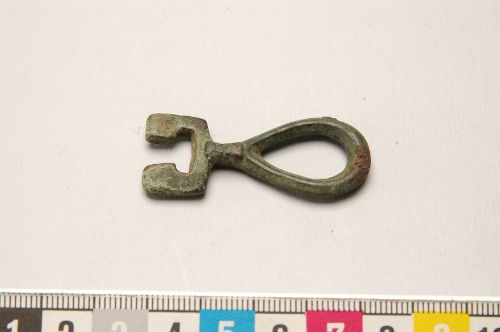The Key of Power
Keys. Such a ubiquitous item today, keys have been with us for a long, long time. The first key and lock mechanisms date back some 6000 years ago, to ancient Egypt and Babylon, where bulky wooden keys would safeguard goods behind bulky wooden locks. Keys have had many evolutions through the ages, from the first metal ones made in the Bronze and Iron age by the Romans, and up to our subject today: the keys in the Viking age.
The Key Bearers
It is commonly believed that in the Viking Age, keys were a symbol of a woman’s power, her possession and control of the precious lockboxes and possessions on the farmstead or in the house. In fact, married free women would be the ones to take care of the farm and keep an eye on the estate when the man of the house would be absent, and legally, the woman was the one to take possession of the inheritance in case of the husband’s , or father’s death. But are these property rights enough to make the Key a ubiquitous symbol of a woman’s status as the housewife? Surely, that would mean that usable keys were to be found in large quantities in almost all female graves. However, that is not the case. Only about 5% of female graves contained some sort of key, and large quantities of generic keys are found in many different archaeological finds, some in male graves and others just out and about in dig sites of ancient settlements. Moreover, some of the keys found in women’s graves are not keys at all, in the sense that they are not functional and are actually pendants or accessories in the shape of the key, and, as far as we could research, none of them were found in graves of the elite class.
What Gives?
And this is where the “housewife” or woman as a keykeeper argument starts falling apart. The Danish History Museum researchers postulate that maybe the subject is more complicated than what the traditional literature would have us believe, and that the Housewife argument, while plausible, is actually too simplistic and inaccurate. Added to this, is the fact that female graves are usually the ones associated with so called “symbolic keys” made out of bronze alloy and highly decorated, while male graves are the ones associated with more functional iron style keys. So, could the elaborate women’s keys unlock special lockboxes, or, if symbolic, signify a special ability or power of the bearer?
Keys have always been regarded as objects of power, mystery and magic. They have long occupied a symbolic niche in our collective imagination as objects that could unlock doors to unknown places, or, in turn, restrict access to only the chosen individuals. Keys symbolize knowledge, control, access, and rarity, the need for something to be protected and locked away. All of these characteristics make the Key the perfect symbol for the knowledgeable woman, the seeress, the keeper of wisdom.
The Freyja Connection
One more piece of the Key puzzle comes to us from the poem Þrymskviða (Thrymskvida) where Thor ends up disguising himself as the Goddess Freyja in order to go steal back his hammer from the giant Thrym. The poem provides an unusually detailed description of his dress, specifically mentioning a bundle of keys as one of Freyja’s characteristic attributes:
”Then said Heimdall,
whitest of Ases,
Of the future aware
as were the Vanir:
"Let us bind then Thor
in bridal linen.
Let him bear the famed
Brisinga necklace.
"And let clinking
keys hang from him,
And female dress
fall round his knees,
And let bright stones
his breast adorn,
And with much skill
make him a head-dress."
This unusual description suggests that keys were in fact associated with Freyja, her powers as a magic wielder, or perhaps a symbol of her control over birth, fertility and death. We might speculate that the women who were found with elaborate, beautiful keys were somehow connected to her, maybe priestesses or powerful women relating to her worship. But these are just our speculations.
All we can say for sure is that the meaning of keys in the Viking age is more complicated than it seems, and that there is much that we don’t yet know and that’s precisely why we are so fascinated by these mysterious objects and their possible meaning.
In the meantime, check out our Gotland Key inspired pendant, made after the minimalistic and elegant key in the image above.
See you next time!




